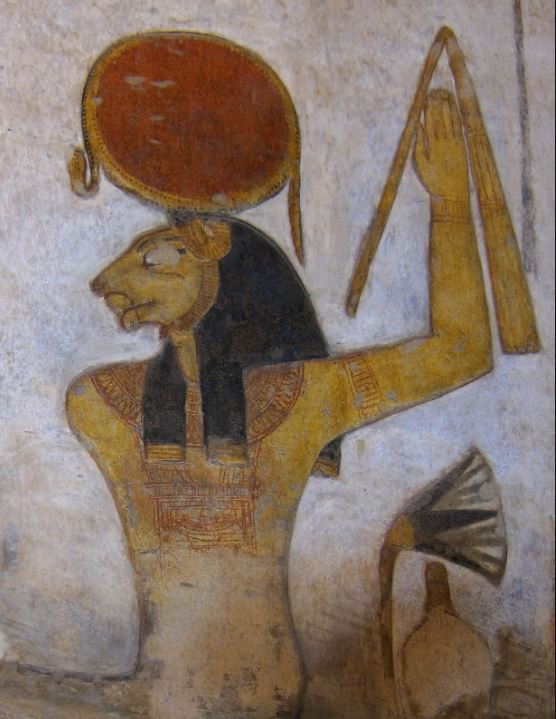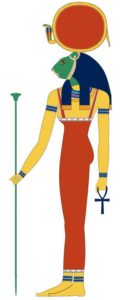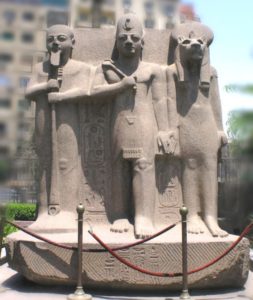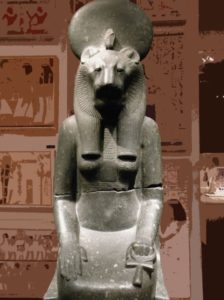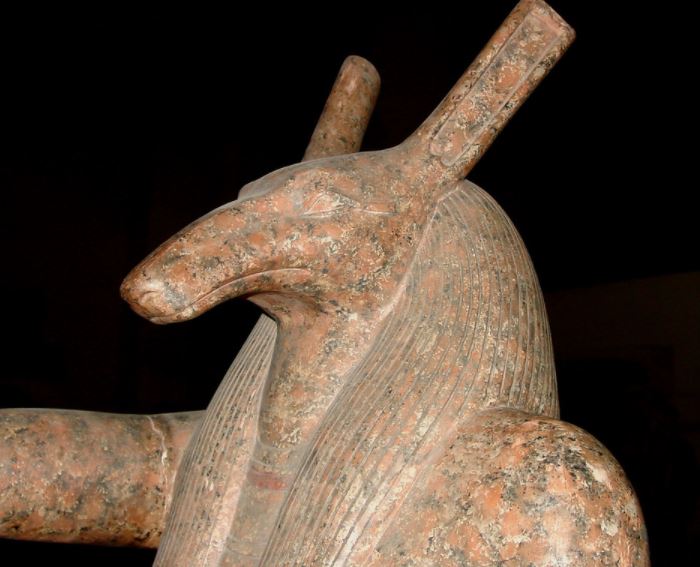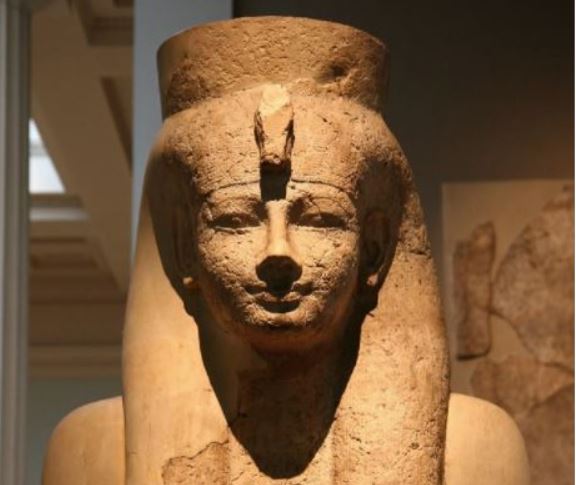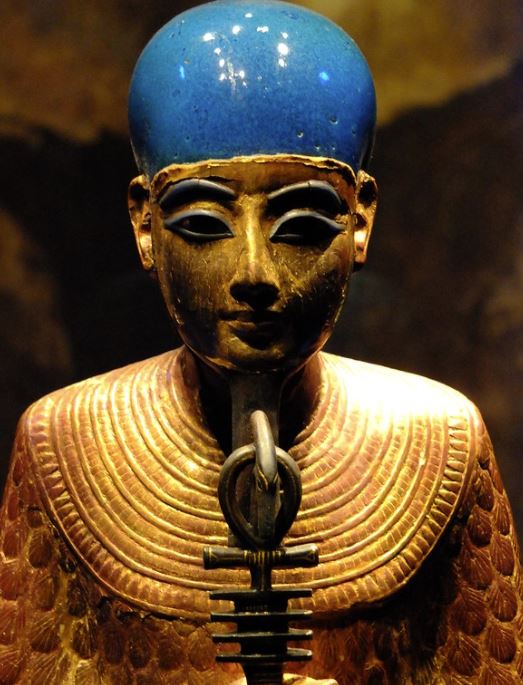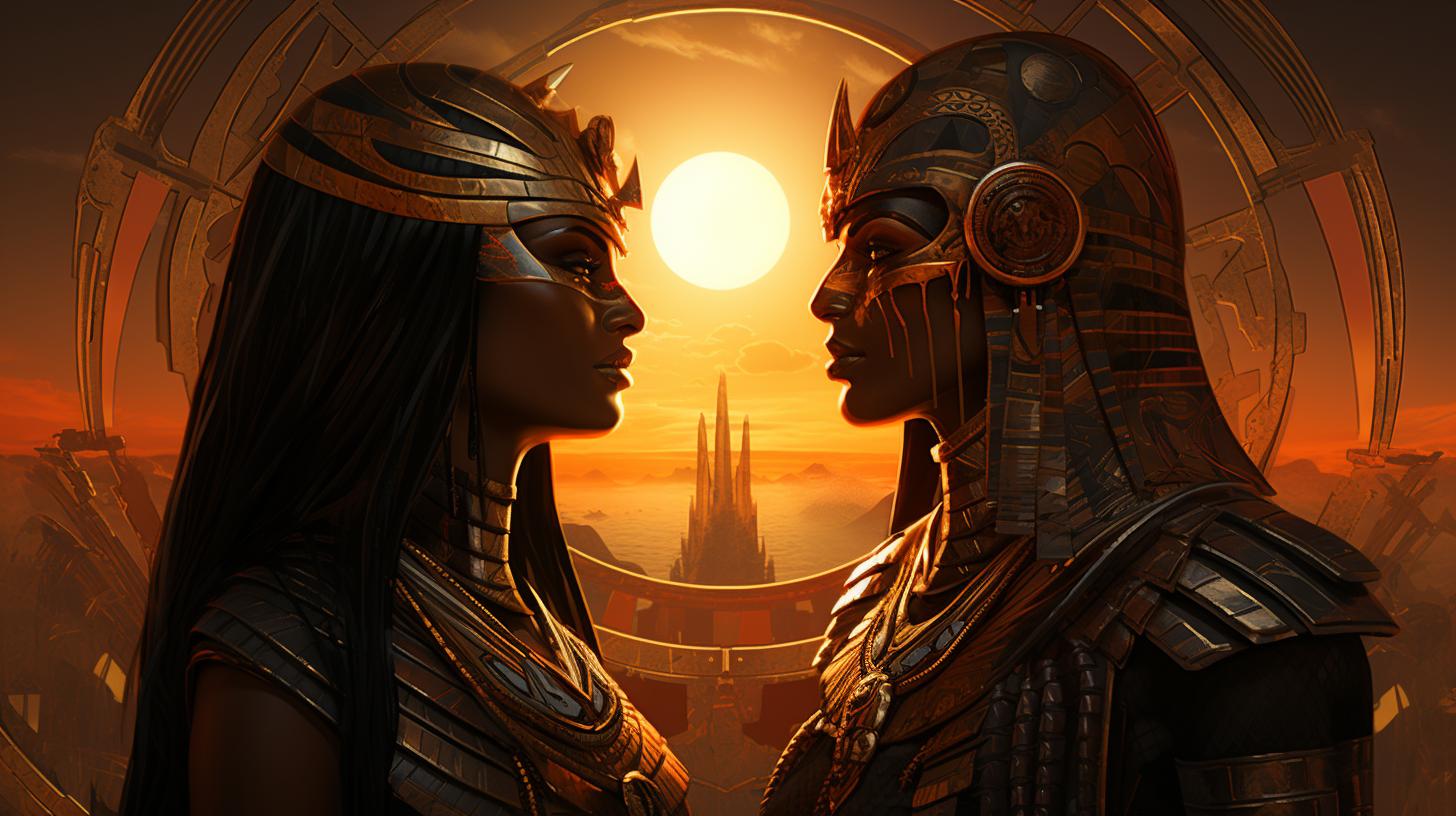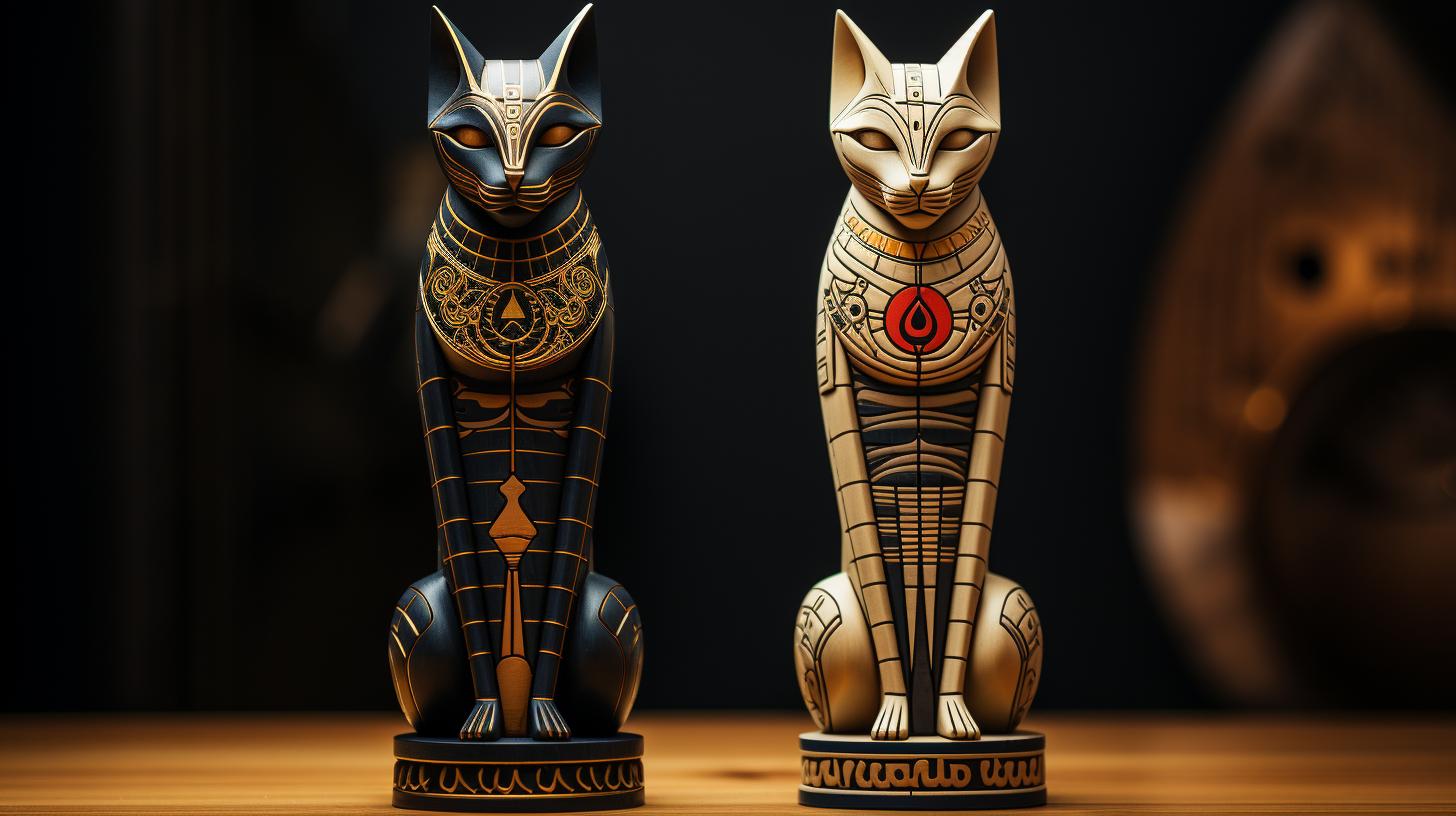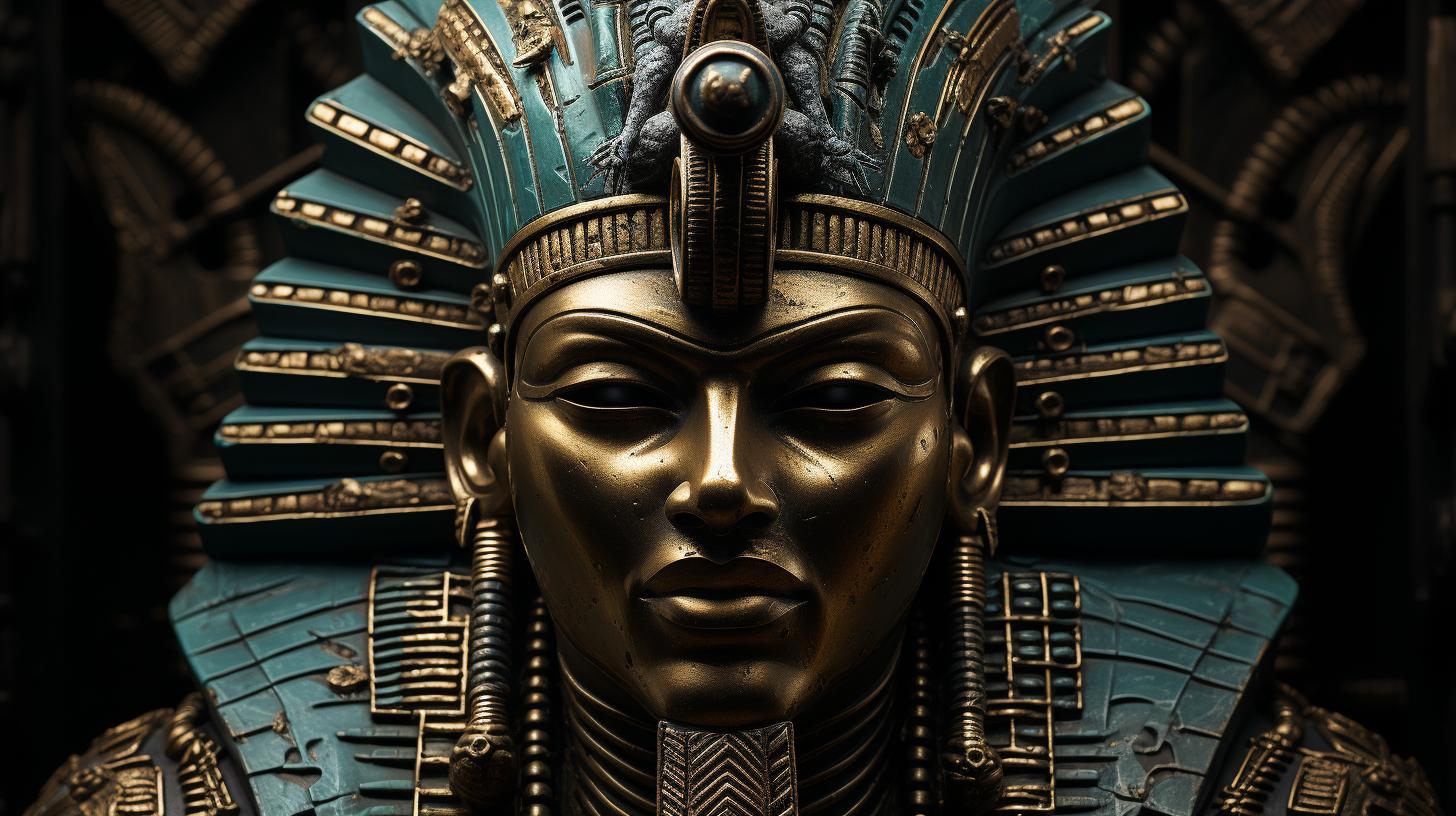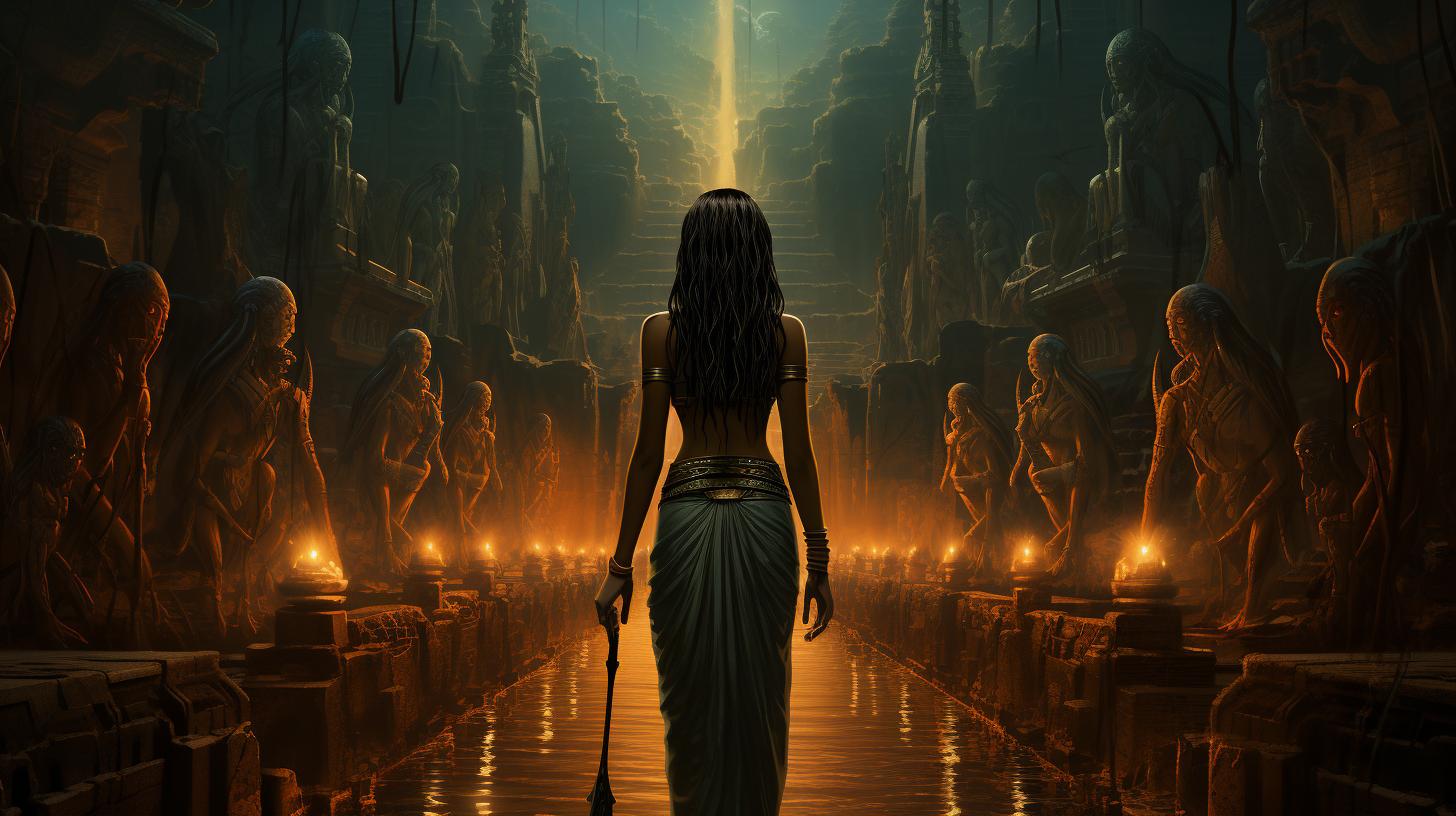Egyptian Goddess Sekhmet, the Goddess of War and Healing
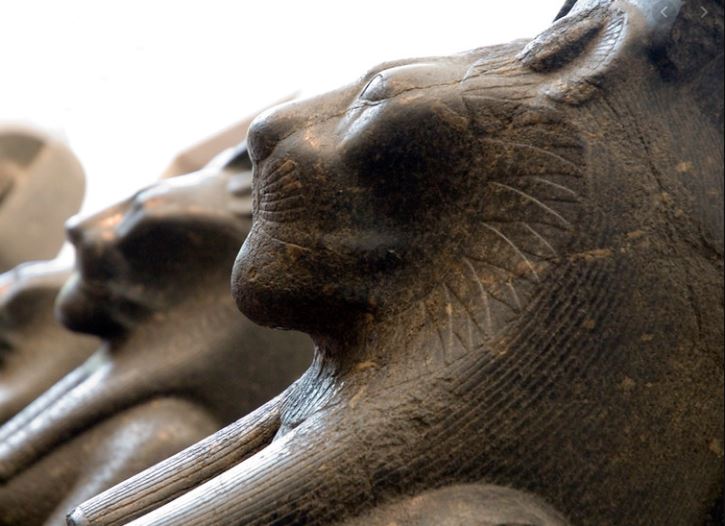
Like in many other pantheons, the Egyptians dedicated a deity for the war and healing. However, unlike other religions, this deity was a goddess of war.
In Ancient Egypt, the Egyptian goddess Sekhmet was typically worshipped as the goddess of war and healing. Ancient Egyptian goddess Sekhmet was actually the goddess Hathor, which transformed herself due to the power of the Eye of Ra.
Egyptian Goddess Sekhmet meaning of her name
The lion goddess Sekhmet name bears a multitude of meanings, ranging from the fearsome “The One Before Whom Evil Trembles” to the outright awe-inspiring “The One Who is Powerful/Mighty”.
Literally speaking, her name derives from the Ancient Egyptian word “shm”, which may be translated as “power” or “might.” But regardless of meaning, Sekhmet, goddess of war and healing, is an imposing figure indeed.
Sekhmet goddess art painted in walls
History of the Egyptian goddess Sekhmet
According to the lineage of the Ancient Egyptian pantheon, the lion goddess Sekhmet was the progeny of the Sun-God, Ra.
One of Ra’s most potent symbols is the legendary “Eye of Ra,” a feminized physical manifestation of the great god’s wrath.
Sekhmet is frequently portrayed as the embodiment of the Eye of Ra, meaning she was a personified enactor of Ra’s vengeance and a destroyer of his enemies.
Iconography usually shows her as a lioness, a literal depiction of her ferocious and warlike nature.
Moreover she is clad in robes of deep red, a further indicator of her ruthlessness and propensity for bloodshed, but also her profound affinity with the desert.
As well as a savage, animalistic form, the Egyptian goddess Sekhmet wields dreadful powers. Her fiery breath is as hot as a desert wind, and she commands plagues with the potential to ravage the Earth.
Sekhmet goddess art representation
Wrath of Ra and the Lion Goddess Sekhmet
According to mythology, when Ra’s reign over the Earth came to an end he was furious with humanity. To fulfill his vengeance, Ra sent Sekhmet to enact a brutal brand of justice.
But Sekhmet’s viciousness outlasted even Ra’s rage, and he soon decided to try and stop her before she wiped out the entirety of the human race.
Legend has it that Ra tricked the Egyptian goddess Sekhmet with 7000 jugs of poisoned beer that they threw to the river, colored with pomegranate juice to resemble human blood.
The literally “bloodthirsty” Sekhmet consumed so much of it that she became drunk and died, and eventually ended her reign of destruction and returned to Ra. She became Hathor again when she woke up.
Statue of the goddess Sekhmet represented as a lion head
The anger of the Egyptian goddess Sekhmet
In another cited variant on the myth, Sekhmet was angered by how Ra had deceived her, and so left Egypt forever, taking with her the bulk of the sun’s brightness.
That is why certain depictions of the goddess also convey a weather-controlling aspect to the deity. Often this takes the form of a golden sun disc atop her head.
Certainly, she is a force to be reckoned with, and her outlandish appearance bespeaks of a personality that is both capricious and petulant.
The god Ptah and the lion goddess Sekhmet
In yet another variant on this story, when Sekhmet awoke from her stupor, the first creature she laid eyes on was the god Ptah. She fell instantly in love with him.
Because of this, she is usually portrayed as the bride of Ptah, god of architects and craftsmen, as well as mother to Maahes and Nefertem.
Like Sekhmet, Maahes is also frequently depicted as a god of war with power over the weather. Maahes shares a significantly feline aspect with his mother, often appearing in statues and iconography as a lion-headed man.
The origin of Nefertem is more complex; his image is conflated with that of a blue lotus flower that blossomed at the creation of the world.
Nefertem had a major influence on even the most everyday aspects of Ancient Egyptian life, many carried small good-luck charms fashioned in his image.
Above all, the union between Sekhmet and Ptah epitomizes harmony: on the one hand, we have Sekhmet the destroyer, and on the other, we have Ptah the creator.
As such, the marriage of these two deities symbolizes the balance and order of the universe.
When it comes to statuary, this is even clearer when we consider the fact that Sekhmet, goddess of war and healing, with her red robes was often depicted facing westward, while Ptah was clad in green and facing the east.
They are positioned as opposites, and yet together their duality is neutralized. They form a complete whole.
A statue of Ramses II, Sekhmet, and Ptah
Egyptian goddess Sekhmet powers
But despite the monstrously violent aspects of Sekhmet, she was also worshipped as a goddess of healing. This stems from her ability to invoke and manipulate plagues and diseases.
Not only can she brandish them as a weapon or a scourge of humanity, but she can also cure them and restore life to the afflicted. As such, Sekhmet goddess of war and healing is a patron of doctors or physicians.
In this respect, she evokes a distinct sense of duality; of violence tempered by compassion. Like a lioness, she is a guardian and is fiercely protective of those in her charge. But paradoxically, she also wields a capacity for inestimable violence and terror.
That’s why statues of Sekhmet were often to be found at burial sites or in tombs, symbolizing an invocation of the goddess to guard the dead on their journey into the afterlife or to watch over the living left behind.
Bust of the goddess Sekhmet
What types of offerings would you leave for the Goddess Sekhmet?
Worship of Sekhmet typically took the form of rituals or celebrations designed to soothe her fiery rage.
For instance, beer colored with pomegranate juice was often drunk in an event characterized as a “festival of intoxication.” This was in honor of the aforementioned alcoholic binge that slaked her bloodlust and saved humankind.
Essentially, this festival glorified the notion of “excess” (too much drink, too much food) in homage to the great goddess. Historians claim that the focal point of these celebrations was often the city of Memphis.
This is due to a large number of statues and temples in her honor which have since been unearthed in that region.
Sekhmet symbols: as a guardian on horseback
Because of her innately regal nature, Sekhmet was considered to be closely affiliated with the rulers of Egypt, the pharaohs.
Artworks depict her as a matriarchal figure to these pharaohs, while friezes showing the Battle of Kadesh feature Sekhmet on horseback serving as both a guardian and as a symbol of bloody victory.
Additional Egyptian goddess Sekhmet facts
Like a significant number of Egyptian gods, Sekhmet has also exerted considerable influence on Western popular culture and has made appearances in such diverse media like the TV show Stargate SG-1, the videogame Assassin’s Creed Origins, and the movie Godzilla: King of the Monsters.
As a symbol, a mythological figure, and a religious icon, Sekhmet remains a towering presence within Egyptian culture and history.

